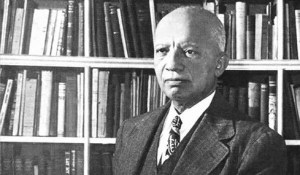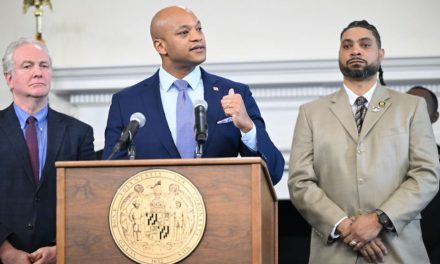By Ralph E. Moore Jr.,
Special to the AFRO
Black History Month is universally recognized throughout the land nowadays thanks to the great Carter G. Woodson. Who was this man and how in the world did he make history so popular?
“The Father of Black History” was born in New Canton, Va. on Dec. 19, 1875. Seven siblings were born to Anna Eliza (Riffle) Woodson and James Woodson. Carter was their fourth child. Even while he worked as a sharecropper and in a coal mine, he managed to graduate from high school in two years at the age of 22. Clearly, he was bright and committed to hard work.
After high school, he was enrolled as a student at Berea College in Kentucky but he earned his bachelor’s and master’s degree from the University of Chicago. In 1912 he obtained a doctorate from Harvard University, the second African American to do so, after W.E.B. DuBois attained one. Woodson became a scholar. He came from a poor family and had limited education in the beginning of his life. He came a long way.
When he joined the American Historical Association, he was not allowed to attend the association’s conferences due to racial prejudice and discrimination. And so, he created a separate group, called the Association for the Study of Negro Life and History. It was in 1926 that Woodson started “Negro History Week” and scheduled it for the second week of February between the birthdays of President Abraham Lincoln and abolitionist, Frederick Douglass, two 19th century civil rights activists.
Negro History Week became Black History Month in 1976. Schools host art contests and speech competitions to educate the public about little known and formerly suppressed information about the lives and contributions of African Americans from the United States. Museums post special exhibits and all around the country the Black Diaspora is celebrated..
Carter Woodson was inspired by the times in which lived– especially the Harlem Renaissance, a movement of his day that led to a period of renewed discovery of Black culture and racial pride. That period, which began in 1920, was also called the New Negro Movement. It was a social and cultural period that resulted in Blacks embracing who they were and what Blacks have done in American history. Although the Harlem Renaissance is known primarily for music, literature especially poetry and art, Blacks people began to “say it loud– I’m Black and I’m proud,” figuratively two generations before soul singer James Brown literally put those words to song. Again in the tremendous era of Black pride and public education about Black folks, Woodson gave us the celebrated month we now observe in America.
From his humble beginnings in Virginia to his high class and groundbreaking ivy-league education, Woodson never forgot who he was and where he came from. He served as an education superintendent in the Philippines, but once he returned to the United States he dedicated his life to African-American history. Many may not be aware that Woodson created a scholarly publication called, “The Journal of Negro History,” for teachers to learn and teach Black History. He also started The Negro History Bulletin as a periodical in 1937 and before that he started a Black owned company, the Associated Publishers Press in 1921.
Woodson was principal of the Armstrong Manual Training School in the nation’s capital before becoming a dean at Howard University. He wrote a dozen books during his career as an educator, most notably he authored, “The Mis-education of the Negro,” in 1933.
His important writing challenged the indoctrination of white supremacy and the need for Blacks to empower ourselves. Of African American participation in American life, Woodson once said, “[contributions] were overlooked, ignored, and even suppressed by the writers of history textbooks and the teachers who use them.”
Woodson died of a heart attack on April 3, 1950 at the age of 74. Still, he remains immortalized by the commemoration of Black History Month each year.
I love history and for that reason, I am grateful to Carter G. Woodson. I am also grateful for those who followed behind him, authors like John Hope Franklin,author of “From Slavery to Freedom,” and now Nikole Hanna-Jones, creator of the 1619 Project. They have all taught Black people to overcome America’s history of discriminating against and denigrating African Americans.
Noted author James Baldwin wrote “An Open Letter to My Sister, Angela Y. Davis ” in November 1970. In that message he wrote the following:

“The American triumph-in which the American tragedy has always been implicit-was to make Black people despise themselves.”
Thanks to Carter G. Woodson’s life’s work, we have learned not to believe what is negatively said about us. In fact, in the same month that Valentine’s Day is celebrated, many of us have actually learned to LOVE ourselves. And that is good.
The post The Moore Report: The AFRO celebrates Carter G. Woodson, the ‘Father of Black History’ appeared first on AFRO American Newspapers .











